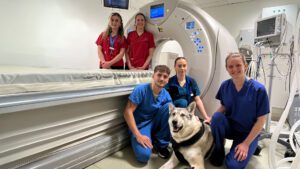Conclusion
In 1981, it was recognised that the “biologic aggressiveness of a STS is the key factor in the selection of the surgical margin required to achieve local control” (Enneking et al. 1981). Almost half a century later, we continue to struggle with the same dilemmas in the management of canine STS. Because there are no diagnostic tests that can reliably predict the amount of surgical margin required for a particular tumour, there may be a mismatch between treatment and disease: some dogs are overtreated for their disease, resulting in large wound reconstructions or amputation when smaller surgical margins would have been effective. Other dogs are undertreated and suffer tumour recurrence and premature death due to inadequate initial treatment. The importance of combination therapy using surgery and radiotherapy, now a mainstay in human STS, has received little attention in the veterinary literature. This review does not seek to provide solutions to the many questions that surround their management. It is clear that treatment strategies will need to take account of the behavioural characteristics of each individual tumour. Comparative lessons from human STS that may be important for the canine patient in the future include (1) developing an improved understanding of the oncogenic potential of the pseudocapsule to better predict tumour behaviour and optimal surgical margins, (2) recognising the importance of planned multi‐modality therapy for improving tumour control, (3) considering a role for compartmental resection strategies and (4) improving the accuracy of pretreatment analysis of the tumour to better predict behaviour and optimal treatment options.
Summary
Soft tissue sarcoma constitutes a heterogeneous group of mesenchymal tumours. Although they are common in the dog, many uncertainties surround the best options for clinical management. Despite recent improvements in outcome, approximately one in five patients may still die as a result of their disease. There is some evidence that wide surgical excision may not be required for every soft tissue sarcoma but, conversely, complacency in treatment may adversely affect outcomes for patients with aggressive disease. The purpose of this review is to examine the issues affecting the management of canine soft tissue sarcoma, and to evaluate the human literature for lessons that may guide future treatment directions for dogs. Comparative lessons from human soft tissue sarcoma that may be important for the canine patient in the future include (1) understanding the oncogenic potential of the pseudocapsule to better predict tumour behaviour and optimal surgical margins, (2) recognising the importance of planned multi‐modality therapy for improving tumour control, (3) considering a role for compartmental resection strategies and (4) improving the accuracy of pretreatment analysis of the tumour to better predict behaviour and optimal treatment options.
Research authors
J P Bray











